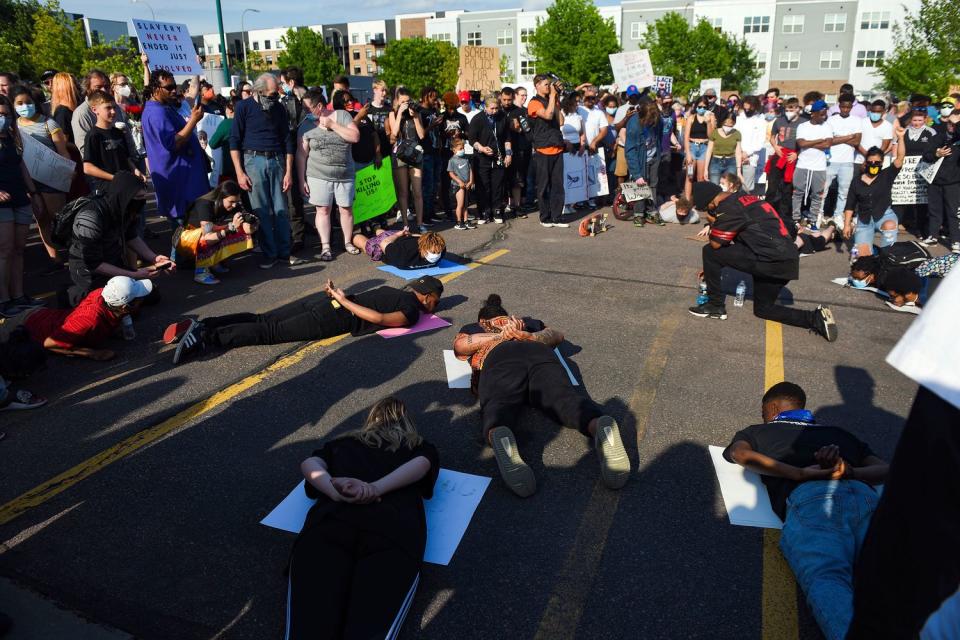Protests after Floyd’s death reach rural America
BOISE, Idaho — Demonstrations sparked by the death of George Floyd have spread well beyond major urban centers to cities and towns across rural America.
In Boise, thousands of people attended a peaceful vigil this week honoring Floyd, the black Minnesota man who died after a white police officer pinned his neck for almost nine minutes, and others who lost their lives to police abuse. Demonstrations after the Tuesday evening vigil lasted until 2:30 a.m. for the third day in a row.
Events in Boise were among demonstrations in more than 350 cities across the U.S. since Floyd’s death, many in urban areas such as New York, Los Angeles and Washington, D.C. But the protesters’ message against racism and police abuse has resonated in smaller cities and towns like Boise as growing minority communities begin to find their voice.
“The history of movements for racial equality in rural America has been overlooked. When people think of the rural West, especially, they tend to think of white communities,” said Steven Beda, a University of Oregon professor who researches rural protest movements. “Many communities of color have long and important histories in these rural communities.”
In Medford and Grants Pass — which Beda described as smaller rural towns in Oregon — demonstrations have been held for several days with hundreds of people participating. In Medford, police helped to redirect traffic to avoid conflict during the largely peaceful protests.
Beda said demonstrations in areas not known as metropolitan melting pots show the long history of the fight by people of color for labor and civil rights in towns where minorities are sometimes an invisible but vital force of rural life.
Boise, a city of 228,000 with a minority population of 18 percent, is not new to protests. Demonstrations supporting rights for children of undocumented immigrants were held in 2017 and 2019, and an MLK Day of Greatness Rally, organized by Boise State University students and staff, draw hundreds of marchers each year. But the size and energy of the crowds at the vigil and protests since Floyd’s death are unusual.
“I know these are hard times, Boise,” Mayor Lauren McLean said ahead of the vigil and protests. “And I know we are all hurting, especially members of the black community.”
For five consecutive nights, demonstrators shouting “black lives matter,” “George Floyd,” "Breonna Taylor,” and “F---Donald Trump,” were met with counter-protesters who open carried, held flags and chanted “Donald Trump,” “blue lives matter” and “Trump, Trump, Trump.” On Tuesday, Idaho State Police and Boise Police in riot gear along with more than 50 other law enforcement officers formed human barricades between the groups. No arrests were made Tuesday night.
One person was taken into custody on Monday after shots were fired near the protest and an arrest was made Wednesday in connection with graffiti on the capitol building.
The protest "speaks to the solidarity displayed across this country in calling out systemic racism that has been prevalent for decades upon decades,” Tiffany Loftin, national director of the Youth & College Division of the NAACP, told POLITICO. “No matter how small the community, that’s incredibly powerful.”
The spillover of these movements is prominent in states like California. Towns like Eureka (population 27,000) and Visalia (population 133,000) are seeing the same drive to organize by hundreds as in cities with millions.
In Visalia, local police report a blue jeep carrying an American flag and a Trump flag struck two protesters after a brief tense exchange at a stoplight.

The same push to organize is also seen in conservative states such as South Dakota and Montana, and even smaller Idaho cities.
Sioux Falls, S.D., population 181,883, saw protests that attracted more than 1,000 people. A curfew and declaration of emergency were instituted after some demonstrators clashed with police.
The town is also home the Smithfield Foods pork processing plant where most of the employees are immigrants. Recently, the plant has been forced to close after 725 workers tested positive for the coronavirus.
Demonstrations of more than 50 people in Sand Point, Idaho Falls, Ketchum and Twin Falls have also taken place over the last four days in the conservative state. Ketchum, with a population of about 2,000, and Twin Falls the with 86,000, saw up to hundreds of people gather to march, block traffic and mourn Floyd.
Similarly, Montana has seen peaceful demonstrations in five towns despite counter-protests.
“I hope these protests in smaller cities do bring visibility to some of the challenges and inequities that communities of color in rural areas face,” Beda said. “I hope it gets us beyond this dichotomy we draw between urban and rural America when we think about race.”

